On Moby Dick
In MOBY DICK; or, The Whale, award-winning filmmaker and visual artist Wu Tsang and the collective Moved by the Motion embark upon a silent film reimagining of Herman Melville’s classic American novel.
Published in 1851, the book tells the story, narrated by the sailor Ishmael, of a whaling ship captain (Ahab) pursuing a white whale (Moby Dick).
The 2022 silent film adaptation follows the whale above and below the surface of the water, tracing the novel’s subterranean currents and contemporary resonances, from ecological crisis to queer desire among a cast of ‘mariners, renegades and castaways’.
On Friday 27 January 2023, the Art Gallery of New South Wales presented the Australian premiere of MOBY DICK; or, The Whale with live accompaniment by the Sydney Symphony Orchestra at the Westpac OpenAir Cinema.
Ahead of the screening, three alumni of the Art Gallery’s Youth Collective – Theo Delaney, Bruce Koussaba and Claire Ollivain – interviewed Tsang, who is currently undertaking a residency at the Schauspielhaus Zürich in Switzerland.
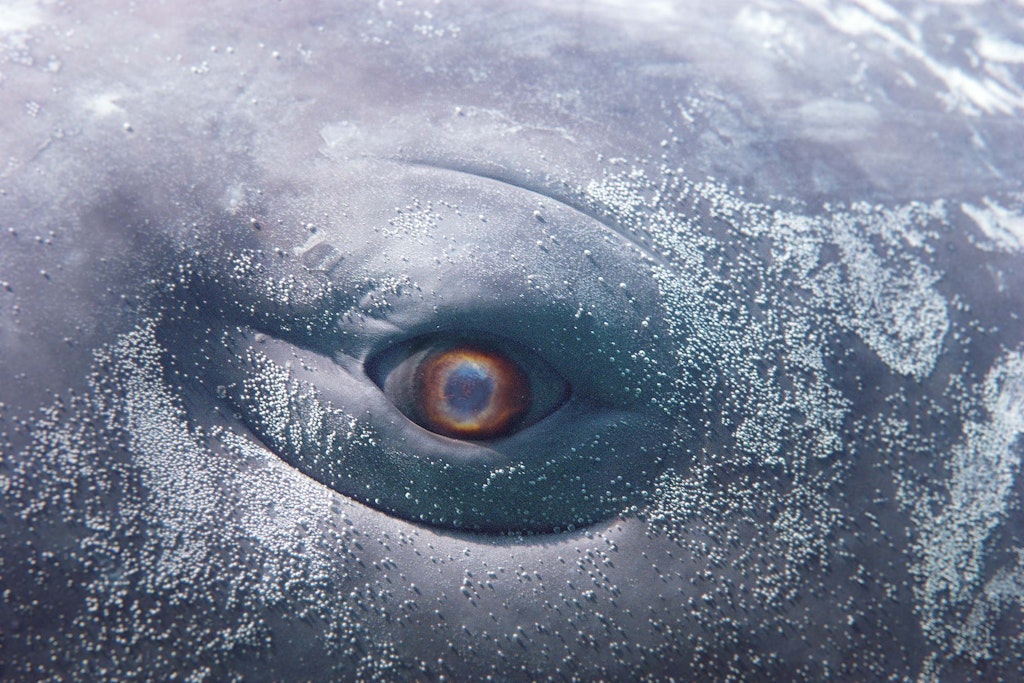
MOBY DICK; or, The Whale (film still), directed by Wu Tsang
TD: Moby Dick, the novel, was written when America and the world was on the cusp of modernity and also the industrial revolution. Your interpretation works through the legacies and consequences of that period from the perspective of the present. Why Moby Dick and why now?
That’s a very good question. The genesis for Moby Dick was actually a talk by a friend of mine, Laura Harris. She was exploring a book that CLR James had written about Moby Dick called Mariners, renegades and castaways, and I think that was my point of entry.
I don’t generally gravitate towards great American classics, but I do love to work with material that’s rich and problematic and multilayered, and that is definitely Moby Dick. As much as it was written in 1851, it could be talking about the present or the future even. I think what’s kind of true of a lot of great art is that it just taps into something bigger than maybe the artist was even aware at the time that they were making it.
I like to think about the past and the future as being in continuity and that there’s always something we can learn. Looking backwards in order to understand what’s coming.
BK: I wanted to ask about collaborations. Traditionally, a director uses their cast and crew as a tool in their arsenal, but you’ve allowed a great amount of space for your collaborators to make significant contributions. How did you go about achieving that?
That’s also a great question. I came to filmmaking originally as an activist and as someone who was very involved in community organising, and I remember what initially drew me to filmmaking was that it felt like a very powerful medium to broadcast a message because it’s a very accessible medium that many people are versed in. It’s also a format that can circulate, especially with the internet. And what I’ve learned in making films over the last 10 or 15 years is that it’s also a very interesting structure for collaboration.
So what I have tried to do over time is use some of the structures that filmmaking offers as a way to collaborate, but try to kind of de-hierarchise them to some degree. For example, I am the director of Moby Dick, and the way I work with Moved by the Motion is often in a director role, but we don’t necessarily consider that role to be a more important role or one that has more authority necessarily. I have this particular skill set; I’m really good at seeing the big picture and helping bring together these different aspects that are technical or kind of time-based. And then, my collaborator Tosh Basco, she’s a really good dramaturg, and she’s also a performer and a dancer, and Josh [Johnson] is a choreographer, and Asma [Maroof] is a musician.
I think film historically always recognises you need all of these roles in order to make an artwork, but it doesn’t necessarily value those roles in the same way in terms of how decisions are made. So we try as a group to internally make decisions together as much as possible.
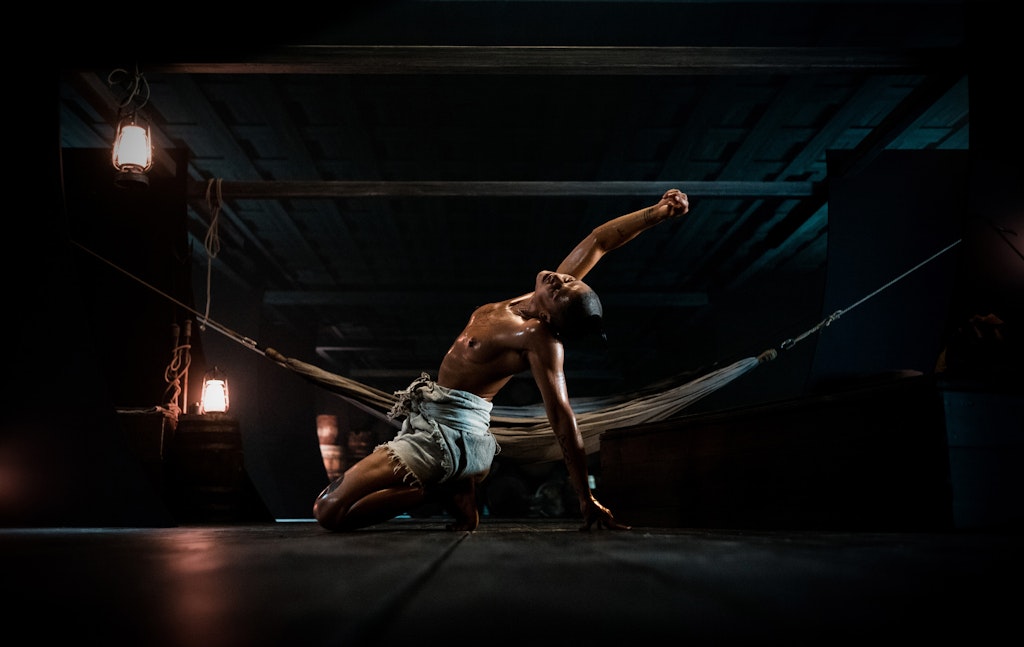
Tosh Basco as Queequeg in MOBY DICK; or, The Whale (production still), photo: Greg Amgwerd
BK: Could you expand a bit further on what you meant by cinema as a problematic medium. Do you mean dealing with the inherent voyeuristic nature of film? Or was there more to that for you?
I think that film perpetuates the fantasy of individual personhood. It’s so much about characters and individual journeys, and that’s not what I think is real. That’s a construction, and it’s a very powerful ideological construction that we’re constantly subjected to. Films program us to think relationally in certain ways that are inherently problematic to the point of violence, you know.
CO: It feels like the way the characters in the film interact works against that individual way of seeing the world. I was wondering about your portrayal of the labourers on the ship. They had this camaraderie that reminded me at times of socialist realist art. They were so synchronised in this really beautiful way. I was wondering, was your focus on labour a way of shifting the narrative from Ahab and his conquest to the less glorified figures of the crew whose stories are less often told?
Yeah, I would definitely say that was an intention with my film, and I really think that really comes from CLR James’ Mariners, renegades and castaways. The book that he wrote is really about the social life of the workers on the whaling ship and actually he uses this metaphor of the whaling ship as pre-industrial floating factory. Whale oil played an important role in the industrial revolution because it was an oil that enabled the development of finer machinery. It enabled people to develop more complex machinery, which then spurred the extraction of more oil to create more machinery.
If we think of the metaphor of the whaling ship as a floating factory, then Ahab is the boss and the sailors are the workers. The workers have this power to unite with each other and build an alternative social life that can also be very resistant to the forces of capitalism. Those are the antagonisms that I tried to explore in the film.
There’s also a really amazing book called The many-headed hydra that is about the maritime history of that period and the role that sailors played. They moved between national identity; they could carry information to different ports across oceans. They were sort of lawless; they would sometimes mutiny the ship.
Actually, Melville himself was someone that worked on a whaling ship and he at one point deserted and lived in the South Pacific. I think that’s where a lot of his orientalist and exotic fantasies about people from that region, like Queequeg [a Pasifika character in the novel], are drawn. He had a complicated admiration because he was not an industrialist. He was an artist who had criticisms of the way the world was evolving.
TD: The film brought to mind Jean Genet’s Querelle of Brest, and more so visually Rainer Werner Fassbinder’s film adaptation of that novel. There’s a trope about the queerness of sailors, who traditionally have very masculine, proletarian associations. In your adaptation, you reinterpret the queer intimacy between Ishmael and Queequeg. Why was it important for you?
Yeah, Querelle was definitely a reference. Particularly as I work now at a German theatre, I think about [Fassbinder] a lot because he came from theatre as well and you can always feel that in his films. They have a very theatrical feeling to them. They feel staged or he doesn't try to hide the fact that there are sets or that there are the edges of scenes or actors that are acting. He uses this kind of disaffected or disidentified kind of performance style.
And I guess that just works for me in general because I think Moby Dick is a queer novel. One of the first scenes is Ishmael and Queequeg in bed. They wake up and they’re in bed and they call it a ‘wedding embrace’ or something – I love that. So that's how I tried to bring the queerness in, to highlight it because I think it’s in the book already. [Melville wrote: ‘For though I tried to move his arm unlock his bridegroom clasp – yet, sleeping as he was, he still hugged me tightly ...’]
In my version, there is this character called the sub-sub-librarian. I mean, he’s very briefly mentioned in Melville but he has a ‘queer handkerchief’ and we just thought that felt so poetic and evocative of the queer interpretation of the novel. But when I say queer, I mean the critique of racism, the critique of the colonial narrative, the critique of heroism. There’s so many things that fold into that word queer.
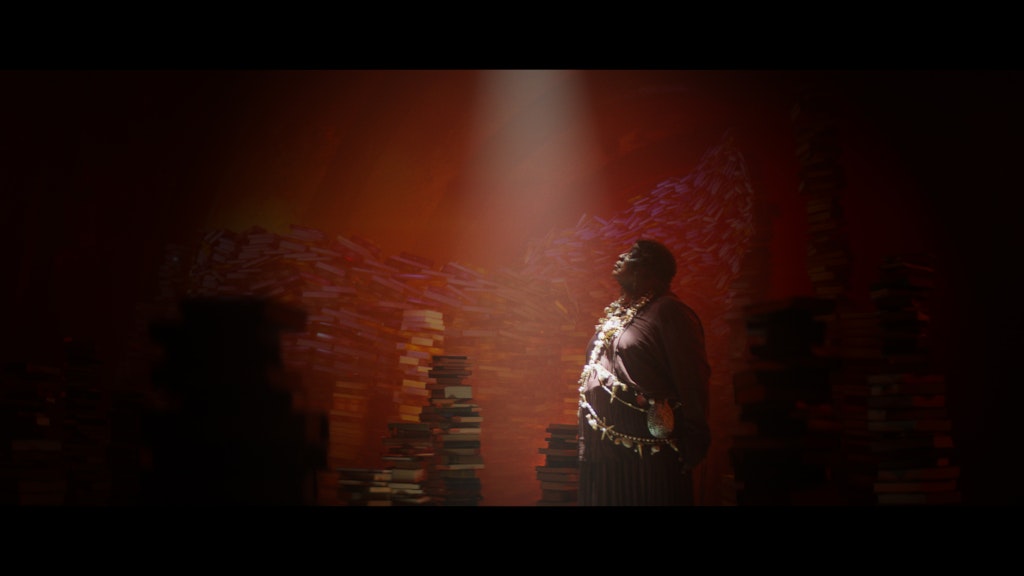
MOBY DICK; or, The Whale (film still)
CO: Your use of rear projection is inspired by classic Hollywood films. You used virtual reality to achieve this effect. In creating an expressive set that draws attention to its own artifice and theatrical excess, did you think about it through the lens of camp aesthetics?
VR is important insofar as wanting to find a surreal visual style for the story, and VR suited that because you can do so much relatively quickly. Having the set be really versatile was really helpful in allowing space for play and improvisation.
Camp for me is a very loaded word, but it’s one that I love, that I have employed in many ways over the years. I think in this instance maybe the campness has to do with the limitedness of VR. I think there’s something quite perverse and funny about the idea of VR because it’s based on this premise that anything is possible in the virtual world. Like, you have this grey field of an XY axis and in it you can put anything. You can put the ocean. You can say the wind is blowing like this. You can say gravity is working like this. But it’s also so limited because you can only do what you can imagine. And that’s so limited because we’re humans. We just actually can’t conceive of the world very much beyond our own perceptions. So that to me, the VR universe makes me think of this chapter in Melville that’s called ‘The chart’. And we have a scene in our film called ‘The chart’ where it’s basically Ahab with his maps and he’s obsessively trying to calculate the migration of the sperm whale. I feel like VR is like that because we’re trying to map a world that we just have such a limited understanding of. It’s such a futile process, and I think that's important to embrace as the filmmaker, to say: ‘This is a world we’ve created, but we’re very aware that it’s very, very limited by our perspective.’
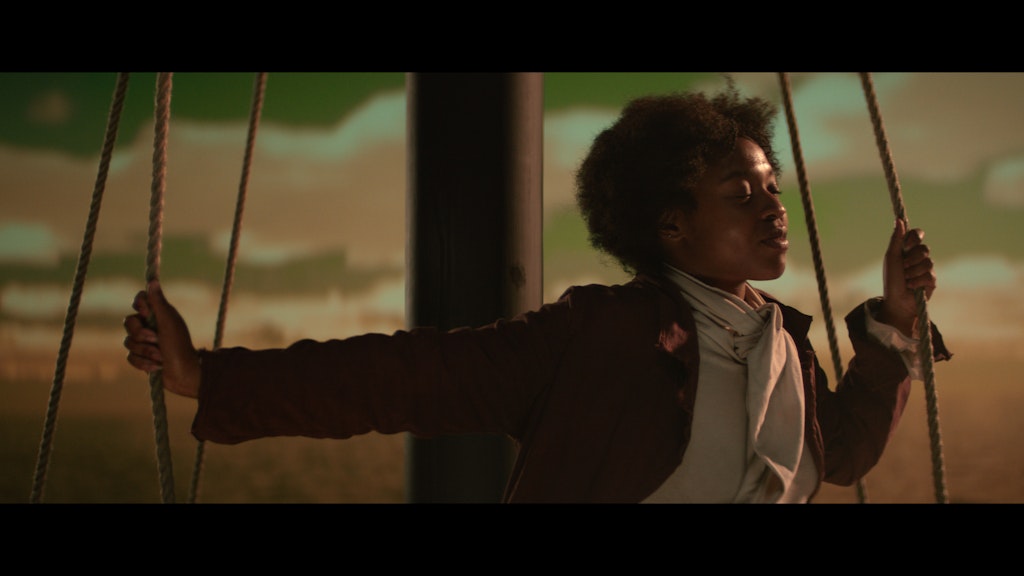
MOBY DICK; or, The Whale (film still)
BK: Why do you think it’s important to reinterpret the language of cinema and to play with narrative forms and modes in your work?
I think my particular instinct is to hybridise forms, like mixing documentary and fiction. I always love when I’m watching films, for example, and there’s a moment where there’s some kind of break in reality where we were in this one world and all of a sudden now we’re in another world. That’s something that I’m always trying to achieve.
This was more of a narrative film than I usually necessarily choose to do. It’s sort of turned out that way partially because the material – there was so much story to tell that we had at some point to be in service of that story, but there’s also moments where we break with that reality and go into other registers like movement, performance, even documentary footage or a manifesto-like voiceover.
CO: Your film is being screened here on Sydney Harbour. Drawing it back to our context here, there are two Australian artworks in the Art Gallery of New South Wales that respond to whaling: Oswald Brierly’s colonial depiction of whalers off Twofold Bay and Waanyi artist Judy Watson’s 1997 red tides, which associates red algae blooms in Sydney Harbour with both whaling and blood from sites of frontier violence. How have the transnational contexts of colonial extraction influenced your approach to Moby Dick? What does it mean to show your film in Australia?
I’m really sad I can’t be in Sydney for the screening because it feels like an important opportunity. I really wish I could experience the film in proximity to the water. I also think in Australia – from conversations with artists and colleagues that live and work there – it seems that there’s a very advanced public discussion about the impact of colonialism, particularly on Indigenous people. And, of course, once there is awareness and discussion, there also becomes all kinds of problems that arise. But it seems like a very interesting context for Moby Dick to be screened in.
TD: Finally, do you have any advice for young people, young arts practitioners or young artists?
I guess I would just say the most important thing to me as a young artist was having a context that I was making work with and for the people around me. They didn’t have to all be my age, they could be older or younger, but just having a way to sustain the creative conversation outside of institutional validation to me is really important.
You guys have great questions. Thank you for inviting me to think about some of this stuff.
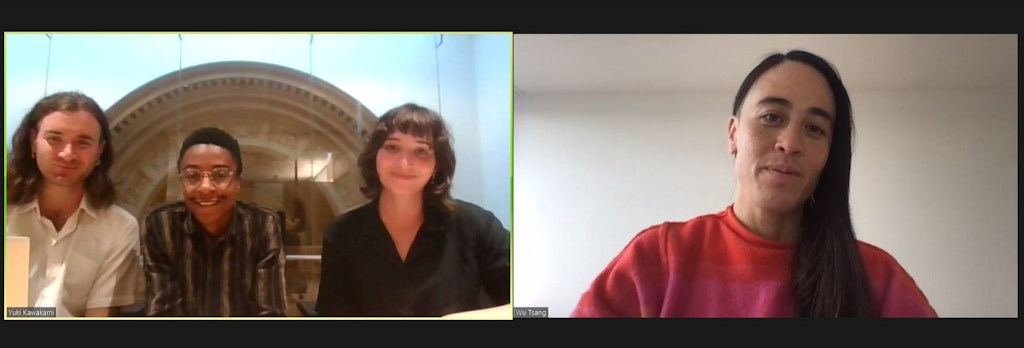
Left to right: Theo Delaney, Bruce Koussaba, Claire Ollivain and Wu Tsang